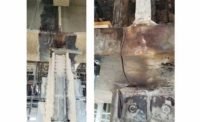This letter is in response to an ENR article, headlined “Bird of Pay” (3/14 p. 7), and a New York Times article, “Santiago Calatrava’s Transit Hub Is a Soaring Symbol of a Boondoggle” (3/2). Both need some explanation and perspective on the final project cost.
The Transit Hub project opened to the public on March 3, a few years later than originally scheduled, at a cost of $4 billion. The original budget, $2.2 billion, was set in 2002. The New York Times describes it as an unconscionable expenditure of public funds.
I was part of the planning process for rebuilding lower Manhattan transportation systems after 9/11. Our top priorities were restoring transportation services and developing permanent, long-term plans. All the agencies involved worked diligently and cooperatively to restore service as soon as possible and to develop the best possible long-term plans to better integrate passenger access to the services and simplify complex, confusing transfers.
Service on the PATH and the damaged subway lines was restored in record time, and the rebuilding project has connected them physically underground. While the original cost estimates and schedules for the projects were based on fairly good quality planning work and known risk assessments, the cost estimates and schedules were, indeed, optimistic, and, as in all complex projects, cost escalation was expected.
The cause of cost overruns and schedule delays in public projects are archaic, 19th-century processes and the project-delivery methods imposed on public agencies. Another problem is that fraud and corruption-prevention programs often create too many layers of oversight. On the other hand, the construction industry has grown more sophisticated with management tools and practices such as integrated project delivery and building information modeling. These methods can minimize waste and make future projects more efficient and cost-effective.
Now that the need for infrastructure renewal has become increasingly urgent and requires trillions of dollars in investment over the next few decades, it is time for public agencies to quickly authorize these innovative delivery methods and practices. Required checks and balances can be maintained effectively if these innovative approaches are properly managed.
Both Fulton Center and the PATH Hub will remain great civic monuments for generations to come. Downtown New York is now a livable community and a major international tourist attraction! Instead of focusing on the cost overruns, we should all celebrate the rebuilding.
Mysore Nagaraja, P.E.
Former President
Metropolitan Transportation Authority
Capital Construction
New York City




Post a comment to this article
Report Abusive Comment